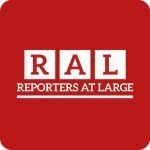ASIAN shares weakened on Wednesday in the wake of accelerating United States’ inflation and comments from Federal Reserve officials that rekindled prospects of an interest rate rise as early as June.
Japanese shares and the yen were volatile, with markets digesting surprisingly strong annualized 1.7 percent growth in the January-March quarter that may be masking pockets of weakness.
European markets were seen opening lower, with financial spreadbetters expecting Britain’s FTSE 100 .FTSE to open 0.3 percent lower, France’s CAC .FCHI to trade down 0.4 and Germany’s DAX .GDAXI to start the day with a 0.6 percent decline.
“Confused? Markets certainly are, up one minute and down the next as speculation about the U.S. economy continues to divide opinion, along with speculation about the number of possible rate rises the Fed might decide upon over the course of the remainder of this year,” Michael Hewson, chief market analyst at CMC Markets in London, wrote in a note.
MSCI’s broadest index of Asia-Pacific shares outside Japan .MIAPJ0000PUS lost 1.1 percent.
After swinging between gains and losses, Japan’s Nikkei 225 .N225 ended the day flat, as the yen JPY=EBS gave up gains seen immediately following the GDP data to slip 0.1 percent to 109.26 per dollar.
“The yen strengthened a bit because growth was stronger than many had expected,” said Ayako Sera, market strategist at Sumitomo Trust and Banking. “But looking at the details, there were still some concerning areas, including capital spending.”
Markets are now looking to Prime Minister Shinzo Abe’s meeting with his coalition party leader, where he could discuss postponing a planned sales tax hike to support the flagging economy.
China’s CSI 300 .CSI300 slipped 1.1 percent and the Shanghai Composite index .SSEC lost 1.6 percent. Hong Kong’s Hang Seng .HSI also slid 1.6 percent.
Wall Street sold off on Tuesday, with the S&P 500 .SPX losing 0.94 percent, after U.S. consumer prices recorded their biggest increase in more than three years in April as gasoline prices and rents rose.
Other data on Tuesday showed housing starts and industrial production rebounded strongly last month, adding to the case for an early rate hike.
U.S. interest rate futures <0#FF:> posted large declines with the December 2016 contract falling the most in two-and-a-half months to price in a 70-80 percent chance of a rate hike by then, with a 50 percent chance of a move priced in by September.
The rate-sensitive two-year U.S. Treasury notes yield, which touched a three-week high of 0.847 percent earlier on Wednesday, was last trading at 0.835 percent. US2YT=RR.
A few Federal Reserve policymakers repeated their mantra that there could be at least two rate increases.
Atlanta Fed President Dennis Lockhart, seen as a policy centrist on the board, said on Tuesday that he still assumes there will be two to three rate hikes, a view echoed by San Francisco Fed President John Williams.
Dallas Fed President Robert Kaplan, seen as a hawk, said he will push for an interest rate hike in June or July.
“Since the strong retail sales data last Friday, the Fed has clearly started a communication campaign to urge markets to price in a hike in June, even though markets have not gone there yet,” said Tomoaki Shishido, fixed income analyst at Nomura Securities.
“They set (Fed Chair Janet) Yellen’s speech on June 6, just after the next payroll data and just before the blackout period will start before the next policy meeting. They wouldn’t have to do this if they have no plan to raise rates in June,” he added.
Expectations of further inflation are stoked by a recent recovery in oil prices, which hit seven-month highs on Tuesday, on expectations of a drawdown in U.S. crude stockpiles and a new wildfire threat on Canadian oil supplies.
U.S. crude futures CLc1 advanced 0.3 percent to $48.45, after climbing as high as $48.76 per barrel late on Tuesday.
International benchmark Brent crude LCOc1 climbed 0.2 percent to $49.40, lingering near the 6-1/2-month high of $49.75 hit on Tuesday, and up more than 80 percent from a 12-year low of $27.10 struck in January.
The U.S. dollar rose on the rising expectations of a Fed rate hike, but gains were capped as many market players looked to the Group of Seven finance chiefs meeting later this week.
The dollar index, which tracks the currency against a basket of six major peers .DXY =USD rose 0.2 percent to 94.778.
The euro EUR= slipped 0.3 percent to $1.12845.
The dollar’s gain weighed on spot gold XAU=, which dropped 0.5 percent to $1,273.40 an ounce.
Source: Reuters









